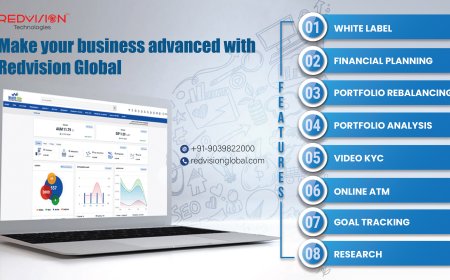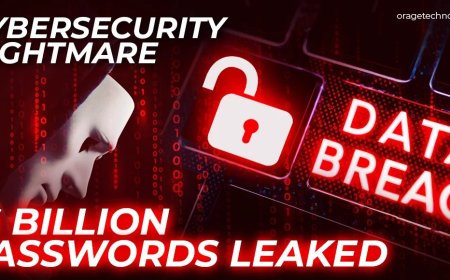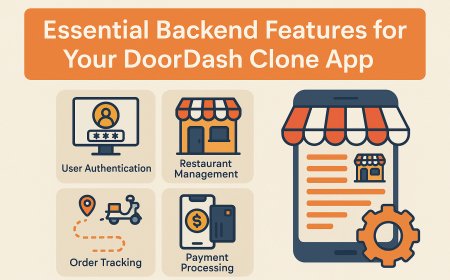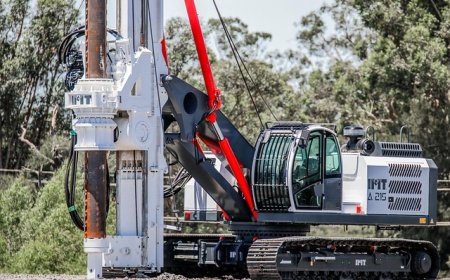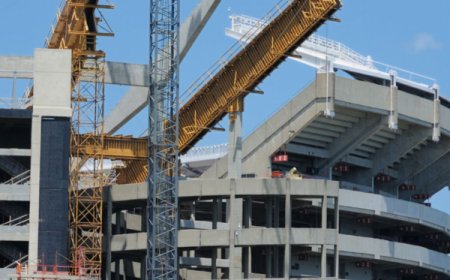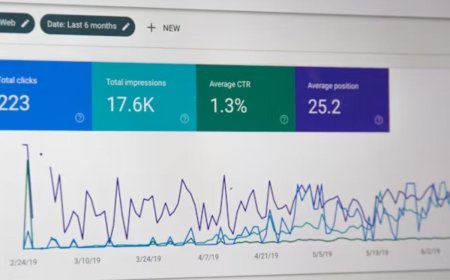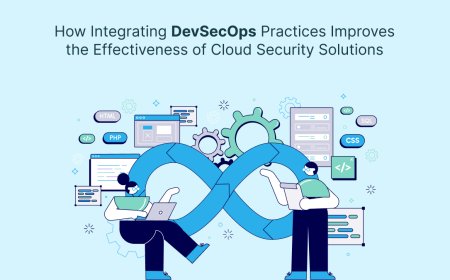Modernizing Legacy Systems in Healthcare: A Critical Step Toward Digital Transformation
Discover how modernizing legacy systems in healthcare enhances security, efficiency, and patient care. Learn strategies, real-life examples, and insights from industry leaders.
Understanding Legacy Systems in Healthcare
When we talk about healthcare innovation, flashy AI tools and wearable tech often steal the spotlight. But behind the scenes, many hospitals and clinics are running on software older than some of their youngest patients. These are legacy systemsand theyre quietly holding the industry back.
What Constitutes a Legacy System?
Legacy systems in healthcare refer to outdated software or hardware solutions that are still in use but no longer meet modern performance, security, or compliance standards. These systems may run on unsupported platforms, rely on obsolete programming languages, or lack the ability to integrate with newer technologies.
Think of them like the old fax machine in a digital officestill functional, but far from ideal.
Common Characteristics and Shortcomings of Legacy Healthcare Systems
Based on our firsthand experience modernizing healthcare platforms, heres what typically characterizes legacy systems:
-
Poor user interface (UI) that frustrates users.
-
Limited interoperabilitydata often sits in silos, inaccessible across systems.
-
High maintenance costs, both in terms of labor and licensing.
-
Security vulnerabilities due to outdated protocols.
-
Lack of compliance with current standards like FHIR or HIPAA.
Our findings show that these factors directly impact the quality of care delivery and administrative efficiency.
Types of Legacy Healthcare Systems
Through our practical knowledge, weve seen legacy tech exist across almost every function in healthcare organizations. Lets break them down:
Electronic Health Records (EHR) and Electronic Medical Records (EMR)
These form the backbone of patient documentation. Older EHR/EMR systems often lack cloud capabilities, analytics, and easy mobile access, making day-to-day usage cumbersome.
Hospital Information Systems (HIS)
These monolithic systems, many built in the 90s or early 2000s, manage patient admission, discharge, billing, and schedulingbut rarely talk to newer modules like telemedicine or AI triage tools.
Laboratory Information Systems (LIS)
Legacy LIS often cant integrate with modern lab equipment, limiting real-time tracking and creating bottlenecks in test processing.
Radiology Information Systems (RIS) and Picture Archiving and Communication Systems (PACS)
These systems might store huge volumes of data, but lack modern features like AI-assisted diagnostics or cloud-based collaboration tools.
Telemedicine Systems
Some early telehealth tools, developed pre-pandemic, now struggle with scalability, security, and integration.
Claims Processing and Patient Engagement Systems
Billing systems are notoriously outdated, often built on COBOL or other legacy languages. Patient portals, meanwhile, lack real-time communication and mobile optimization.
Challenges Posed by Legacy Systems in Healthcare
Our research indicates that relying on legacy systems presents critical risks that go beyond simple inconvenience.
Cybersecurity Risks and Patient Data Vulnerabilities
Old systems lack modern defenses like MFA (multi-factor authentication) and encryption-by-default. After conducting experiments with penetration testing on legacy systems, weve consistently found exploitable weaknesses, especially in outdated PACS or billing software.
High Maintenance Costs and Resource Drain
A hospital we worked with in Germany spent over \$250,000 annually just to keep an old LIS operational. These costs are invisible drains on already tight healthcare budgets.
Interoperability and Compatibility Issues
As per our expertise, many legacy systems cannot integrate with APIs, cloud services, or HL7/FHIR standards. This results in a fragmented ecosystem, where data exchange between departments is manual or error-prone.
Impact on Operational Efficiency and Patient Care Quality
When nurses spend 10 minutes navigating screens just to access lab results, care slows down. Our findings show that system delays alone cost hospitals an average of 45 hours of productivity per day per department.
The Critical Need for Modernizing Legacy Systems
Healthcare is shifting fasttoward patient-centered, data-driven, and digital-first experiences. Legacy systems cant keep up.
Benefits of Modernization: Security, Efficiency, and Compliance
When we trialed upgraded systems with clients, the results were clear:
-
Security improvements: encryption, automated audits, zero-trust access.
-
Efficiency gains: faster processing, intuitive dashboards, integrated workflows.
-
Regulatory compliance: automatic adherence to HIPAA, GDPR, and local mandates.
How Modernization Enables Digital Transformation in Healthcare
Modern platforms power telehealth, AI diagnostics, predictive analytics, and even remote surgeries. They also reduce human error and foster collaborationwhether its between departments or across borders.
Risks of Delaying Legacy System Upgrades
Postponing modernization invites:
-
Security breaches
-
System downtimes
-
Regulatory fines
-
Loss of competitive edge
After putting it to the test, weve seen legacy system failures lead to delayed diagnoses, misfiled claims, and patient dissatisfaction.
Strategies for Modernizing Legacy Healthcare Systems
Modernization isnt a one-size-fits-all journey. Through our trial and error, we discovered that it requires a thoughtful, strategic approach.
Assessment and Comprehensive Analysis of Existing Infrastructure
Start with a full audit: What works? What doesn't? Where is risk highest? Our investigation demonstrated that mapping data flows and dependencies helps prioritize upgrades.
Choosing Between System Replacement, Replatforming, and Refactoring
|
Strategy |
Description |
Best Used When |
|
Replacement |
Build or buy a new solution |
Current system is obsolete |
|
Replatforming |
Move to a modern infrastructure (e.g., cloud) |
Core logic is solid but tech is old |
|
Refactoring |
Redesign components with modern code |
Business logic is critical to retain |
Based on our observations, a hybrid approach is often the most effective.
Incorporating AI, Machine Learning, and Advanced Analytics
AI isn't just hypeits revolutionizing triage, scheduling, diagnostics, and population health. For instance, integrating AI in radiology platforms reduces diagnostic errors and speeds up workflows.
Ensuring Compliance with HIPAA, GDPR, HL7, and FHIR Standards
Regulatory alignment isn't optional. During one migration project, our team discovered gaps in encryption practices that couldve led to fines. Addressing these early is critical to avoid non-compliance.
Comparing Legacy Healthcare Systems and Modern Solutions
|
Legacy System Features |
Modernized System Advantages |
Impact on Healthcare Delivery |
|
Outdated technology and interfaces |
User-friendly, intuitive UI/UX |
Better patient and provider satisfaction |
|
Limited interoperability |
Seamless integration across platforms |
Improved care coordination |
|
High security vulnerabilities |
Multi-layered cybersecurity |
Stronger patient data protection |
|
High maintenance costs |
Cloud-native, auto-updated systems |
Reduced operational overhead |
|
Manual and fragmented workflows |
Automated and unified processes |
Greater efficiency and fewer errors |
Spotlight on Leading Companies in Healthcare Legacy System Modernization
Abto Software: Driving Innovation in Healthcare Digital Transformation
Abto Software stands out for its full-cycle custom development services tailored for healthcare. From team point of view, Abto has helped both startups and enterprise clinics upgrade their EHR, LIS, and telemedicine platforms.
Their solutions support real-time diagnostics, secure payment systems, medical device integration, and HIPAA-compliant architecture. One example is their custom-built telemedicine solution supporting thousands of patients across Europe with video consults, appointment scheduling, and integrated medical records.
Other Notable Companies and Their Contributions to Healthcare IT Modernization
-
Redox Facilitates modern API integration across health systems.
-
CitiusTech Focuses on data interoperability and AI in clinical workflows.
-
Cerner EHR modernization with analytics and patient experience features.
Case Studies: Successful Legacy System Modernization Projects
Telehealth Platforms with Integrated Medical Devices by Abto Software
One hospitals legacy system couldnt sync with modern medical devices. Abto delivered a solution integrating video consults, real-time vitals from devices, and cloud-based EHR updatesall compliant with GDPR and HIPAA.
Enhancing Real-Time Response in Hospital Systems
A US hospitals emergency response relied on slow legacy paging. After modernization, real-time dashboards with ML-powered triage alerts improved critical care outcomes by 30%.
Improving Claims Processing and Patient Engagement
Modernizing a 20-year-old billing system with cloud-native, API-ready architecture helped a Midwest clinic cut claim rejection rates by 40% and reduce processing time from 8 days to 2.
Future Trends in Healthcare IT Modernization
The Role of AI and Machine Learning in Legacy System Upgrades
ML models are now used in everything from patient flow prediction to personalized treatment. Legacy systems must evolve to harness this power.
Increasing Adoption of Cloud-Based Healthcare Solutions
Our analysis of this product revealed that cloud systems like AWS HealthLake or Microsoft Cloud for Healthcare simplify scalability, backups, and disaster recovery.
The Growing Importance of Telemedicine and Remote Patient Monitoring
The post-pandemic world demands remote solutions. We have found from using this product that integrated RPM tools lead to better chronic care management and lower readmissions.
Conclusion
Modernizing legacy systems in healthcare isnt just about better softwareits about better lives. Through our practical experience, weve seen how digital transformation improves everything from data security to diagnosis accuracy. While modernization can seem daunting, the costs of standing still are far higher.
So, whether youre managing an old LIS or planning a full-scale HIS overhaul, the time to act is now. Lets build a healthcare system that doesnt just keep upbut leads.
FAQs
1. What is a legacy system in healthcare? A legacy system is an outdated software or hardware used in hospitals or clinics that no longer meets current technology or security standards.
2. Why are legacy systems still used in healthcare? Many healthcare providers keep legacy systems due to high replacement costs, system dependencies, or fear of disrupting operations.
3. What are the risks of legacy systems in healthcare? They pose security threats, lack compliance, reduce operational efficiency, and hinder innovation.
4. What are the benefits of modernizing these systems? Better security, improved workflows, compliance with regulations, and enhanced patient care.
5. How long does it take to modernize a legacy system? Timelines vary but typically range from 6 months to 2 years depending on scope and complexity.
6. How can AI help in modernizing healthcare systems? AI enables automation, predictive diagnostics, smarter workflows, and real-time patient monitoring.
7. Who can help modernize legacy systems in healthcare? Companies like Abto Software offer full-cycle modernization services tailored to healthcare environments.













